

To fill a glaring gap in the decommissioning market, Voll Marintek Limited is pioneering the HWU-150 Lean Machine, a dual jack lifting system with key advantages over rigless operations and MDR to deliver significant cost, risk and climate benefits for the industry.
Dennis Vollmar, CEO of Voll Marintek Limited, spoke to Offshore Network to discuss his innovative solution in detail and explained how he identified this opening in the market.

“So we realised there was a gap by knocking on doors really. We had deep interactions with different operators, service providers and contractors and realised there was space for something new.
“It comes down to knowing well conditions. Wells which are coming to the end of their life are usually decades old and in this time the way data is collected has changed. In many cases you don’t even know which revision is the most updated one. In these cases, you have two options: either a customised approach with the deployment of specialised workover units for each subtask or use a rig.”
There are drawbacks to both. In the former, rigless workover units require intensive planning, a detailed knowledge of well integrity and, due to their simplicity and dependency on crane support, they are highly vulnerable to unforeseen events and weather conditions. Rigs on the other hand have more capacity and can simplify the planning and execution phase, but generally have a very high spread cost and carbon footprint.
Voll Marintek, therefore, has developed the Lean Machine, a multipurpose unit to fill the void between these two options.
“The Lean Machine is basically a hybrid solution between a hydraulic workover unit (HWU) and a modular drilling rig (MDR). It combines the main features of a HWU such as fast assembly, lightness, compactness and only requires a small footprint in addition to the benefits of MDR such as drilling, milling, making pipe connections respectively handling different pipe types conventionally and in a safe manner.”
The dual jack lifting system is a modular adaptable multipurpose unit which has the capacity to be upgraded with additional features so that it can be customised for each project and adapted to various interfaces. It consists of different modules designed to cover a specific P&A task which can be stacked on top of each other, extending the previous operational envelope of the complete system (this is called ‘The Happy Meal’). This means it can be upgraded with existing modules at the offshore location to perform sequential tasks instead of mobilising specialised equipment for each subtask or oversized workover rigs.
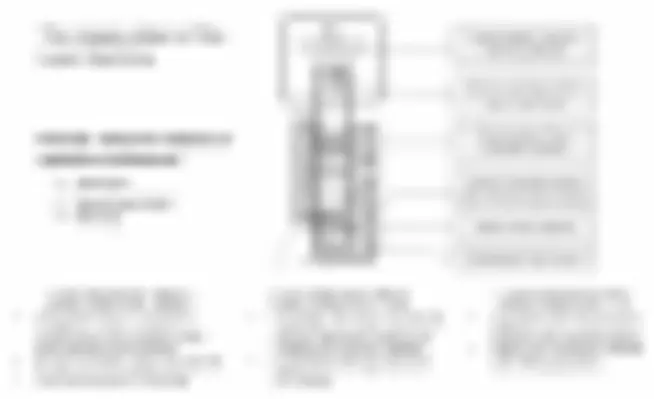
The operator can choose the options required based on additional costs for each contingency as desired always keeping integrated costs in mind. Importantly, the compactness of the 10 ft container footprint and the lightness of each module (around 12 mt) allow its assembly on a skid beam substructure, heave compensation platform or in a derrick structure of an existing rig.
Explaining the benefits of the system, Vollmar commented, “Cost and risk are the main drivers here. When looking at costs for an operation you want to see exactly the expenditure that will be incurred. Often this is not possible without an extensive preparation phase and even then unforeseen circumstances can occur – which is why rigs are often used.
“What we are doing is to see how we can make the whole process lean. So when you know the potential work scopes you need to perform you can configure the machine to it but, if you have the eventuality of making adaptations (maybe to enhance the operational envelope or even downsize it), you can do that in the field and this is where costs can be significantly reduced.”
Vollmar claimed that the deployment of the modular adaptable unit to tackle challenges within the P&A and decommissioning space will enable the highest potential cost savings available. The faster pipe recovery system alone allows cost savings of US$1mn per well based on a five day execution phase reduction. A global operator has already performed a preliminary total cost analysis in comparison to conventional solutions and identified a cost reduction above 30% for his 100 well campaign.

The high cost of a rig is also mirrored in its high carbon footprint, a somewhat neglected but increasingly pressing concern for the oil and gas industry. HWU’s of course have an advantage here, but poor weather, unforeseen events and the mobilisation of additional equipment to cover all P&A phases can bring down operational efficiency and extends the time duration for a P&A campaign– which is not a problem for the Lean Machine.
Mounting market interest
While still at the start of its journey, the Lean Machine is already attracting attention and suitors which is driving it steadily towards commercialisation.
“The interest in regard to decommissioning is operators who see themselves as delay asset management companies and want to change or look at game changers to reduce the cost of decommissioning,” Vollmar remarked.
“There is also interest beyond decommissioning in production enhancement, for example. As the oil and gas prices increases, we need to look at solutions which reduce costs and simplify the process. Usually, you can collect wells with the same well challenges which only require wireline (for example) for a campaign. Then you need to get a certain threshold to justify the costs to mobilise other equipment. Our approach gives you the advantage as it is multipurpose and has all this included. You can combine now all the different well interventions and justify the cost much easier, which obviously increases the recovery factor of mature fields.” The wide application range simplifies wireline, side track drilling, coiled tubing, ESP runs, conductor pulling, life well interventions or slot recovery operations. On top, the dual jacking system reduces operational time by almost 40% and its offering a hoisting capacity up to 250mt.
For the next steps on its promising journey, Voll Marintek will be conducting a FEED study in September 2022 for which they have been granted a significant grant by Innovate UK. The company will look at different potential well designs which would require P&A and test the technical, commercial and operational feasibility of the Lean Machine against them. Over the course of the study, further engineering and optimisation of the solution will be undertaken.
“We are already receiving interest from operators to manufacture the system and offer it at a rental rate. The idea here would be we manufacture the system, rent it out and then provide maintenance and support when needed,” surmised Vollmar.
While Europe is the launch pad, it is clear that Vollmar has no intention of shackling his ambitions to this region, but instead envisioned the Lean Machine being rolled out across the globe.
“This solution has been developed through niche market research and I looked at a lot which are not currently provided for with a sufficient solution. For example, Australia and Brunei have a lot of wells in four to five metres water depth which you cannot enter with normal jackups. So you need to engineer something which is light, compact and could be added to any vessel of opportunity. But, at the same time, you don’t want to make any large vessel modification. So companies have been looking at lift barges to put a cantilever on but this is not economical or would only be so with a contract for 5-10 years as, again, you need to make modifications. It would be much easier to have something light and compact which could be put on top of the wellheads and even deployed by a jacking barge (or between two).”
“In Asia and Africa, people did not really think about workovers and so you often find wells with a production facility incredibly close. Workover equipment is only feasible if you look really deeply into interfaces and have the time and resources to do it. The Lean Machine could really help here and can be easily adapted depending on how much space is available at location.”
While it was clear that Vollmar is very much ready to take on the world with the Lean Machine, for now it is time to build the foundations. After the start of the FEED study, the next steps for Voll Marintek will be building alliances, manufacturing and testing and field trials before commercialisation – currently targeted in 2024/25. Without doubt, however, there will be many in the industry following this progression with great interest.
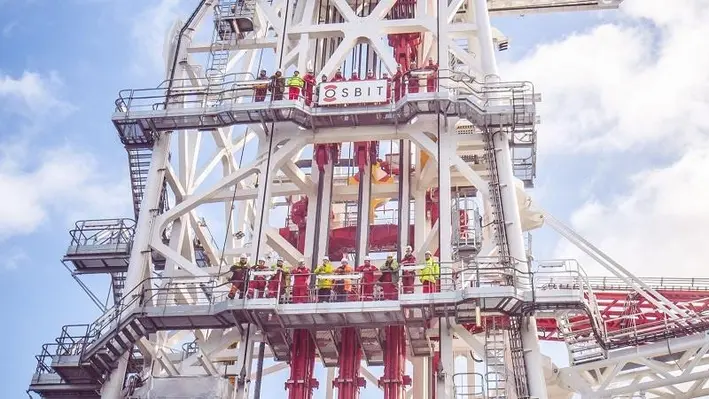

Osbit, an offshore technology company, has delivered a new intervention tower system to FTAI Ocean which comprises 1,300 tonnes of equipment and stands at 40 metres tall.
The tower will enable riser and riserless based well intervention activities in water depths of up to 1,500 metres and integrates a series of innovations derived from the company’s extensive experience in developing well intervention and offshore handling equipment.
The tower’s vertical racking system reduces the need for well centre access, while maximising deck space with its small footprint. An active and passive heave compensated platform supports coil tubing, slickline and e-line operations, while safe personnel access is facilitated via an integrated walk to work system.
For riserless operations, the system has four guide wires and two pod wires integrated with the existing vessel crane which provides up to 250 tonne Safe Working Load (SWL) active heave compensation. The system’s deck skidding system minimises the need for crane lifts, increases the operating window, and enables equipment to be directly loaded into the well centre.
The tower was fabricated and assembled at Wilton Engineering Services in Teesside, UK.
Osbit Director Steve Binney, commented, “Completing this project is a huge achievement for Osbit, and we have worked extremely hard to deliver our largest and most technologically complex engineering system yet. As a team, we have overcome many obstacles to reach this important milestone, which shows not only our capability, but that of North East England, and our fantastic supply chain."
Project Director, Steve Bedford, added, “The delivery of this project is Osbit’s biggest milestone yet and is testament to the unbelievable efforts of the whole Osbit team, most of whom have made a direct contribution towards making this happen. This tower system is a prime example of how we work from first principles, combining our proven technology modules with fresh thinking to produce exciting engineering systems for the offshore world.
"It has also been rewarding to watch our team grow and develop as they supported this project’s development, and we are already applying this learning on to our latest projects and concepts for the offshore wind market. With the build complete, we are looking forward to providing further support to FTAI Ocean now that preparations are underway for transportation to Singapore.”
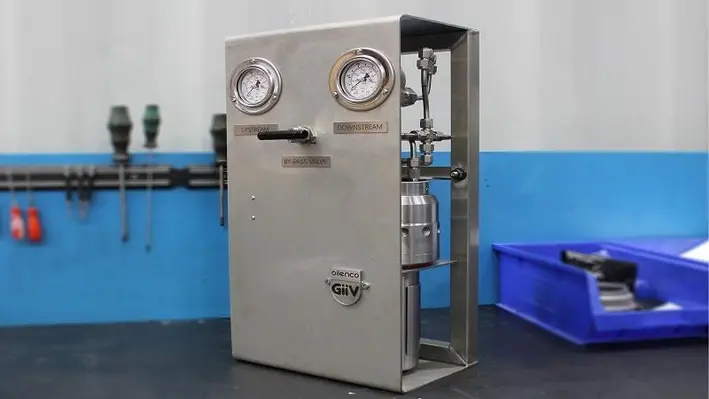

In the oil and gas industry, tubing retrievable subsurface safety valves (TRSSSV) are routinely tested to ensure they provide fail-safe well protection. However, it is not uncommon for these safety valves to reveal seal integrity issues when closed.
As the hydraulic control line bypasses all conventional wellhead valve closure systems, this increases the risk of well integrity being compromised and the likelihood of uncontrolled hydrocarbon gas migrating to the surface.
When control line gas ingress is a known issue, it is feasible to manually isolate at the control line inlet, however under an emergency shutdown (ESD) situation, when the safety of personnel is the highest priority, manual intervention may not be possible, potentially leaving an exposed route for hydrocarbon gas to migrate through the main hydraulic power unit (HPU).
In 2016, during a routine test, a North Sea operator discovered gas seeping through the TRSSSV through a failed seal, travelling up the control line, accumulating at the HPU. Whilst this was a scheduled test and manual intervention was possible, it was categorised as a severe risk should an ESD situation arise. Oilenco identified the necessity for a fully autonomous solution and designed the Gas Ingress Isolation Valve (GiiV).
The primary purpose of the GiiV is to perform the same function as manually isolating the control line, but without human intervention. Situated in close proximity to the control line inlet, the system is fully autonomous and does not require additional infrastructure to operate. By using elements of the existing well control system, the GiiV can detect a reduction in pressure of the safety valve control line system. When the system is depressurised sufficiently to fully close the downhole safety valve, the GiiV automatically isolates the control line.
To reopen the GiiV, pressure from the HPU is applied, and with the GiiV open, further system pressure re-opens the downhole safety valve allowing operations and production to resume.
The GiiV has been designed so the isolation process can be repeated time and time again as often as required without human intervention.
Whilst the GiiV does not fix the root cause of the gas ingress, it acts as a safety barrier allowing the operator time to plan a solution, protecting people, the asset, and the environment.

Warren Ackroyd, Managing Director, Oilenco, said, “Presenting this solution to market was a game changer in offshore safety and hydrocarbon gas ingress management. Each GiiV complies with UKCA certification, and we are constantly reviewing the technology to ensure it continues to play a vital role in the life safety and asset integrity of offshore assets.
There are currently 18 GiiV’s in the field installed by various operators across the North Sea, Vietnam, and Indonesia with a further 14 units currently in production in 2022. As Oilenco celebrate six years since the conception of the GiiV, this tried and trusted product has become a safety critical solution for gas ingress challenges and an established part of well integrity assurance.”
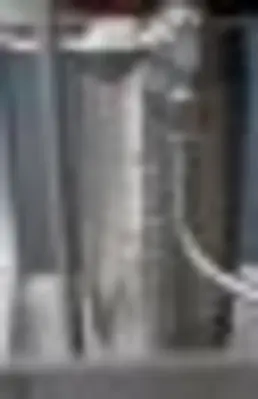
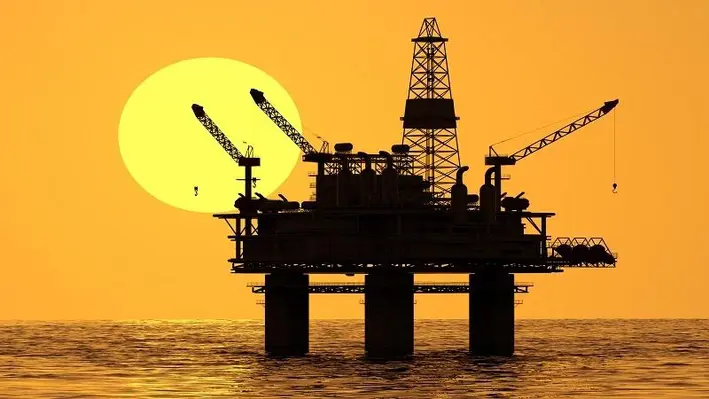

Tailwind Energy has successfully completed a well intervention in the Dana-operated Bittern Field, located in the North Sea.
On well PA-A2, new perforations were added to the upper reservoir and a water shut-off plug in the lower reservoir section.
This intervention has increased the oil rate from c. 1,000 boe/d to c.3,000 boe/d, marking a significant boast to production.
The news comes soon after the company reported a strong financial performance across 2021 with robust figures. In the 2021 CEO review, it was reported that actual production averaged 14,000 boe/d and all assets performed at, or over plan except for Columbus. As a result, the company recorded an increase in revenue to US$382mn relative to US$263mn in 2020. Such a strong performance has allowed the company to recycle cash back into the business and last year it invested the highest capital spend programme to date which included two wells being successfuly drilled and completed.

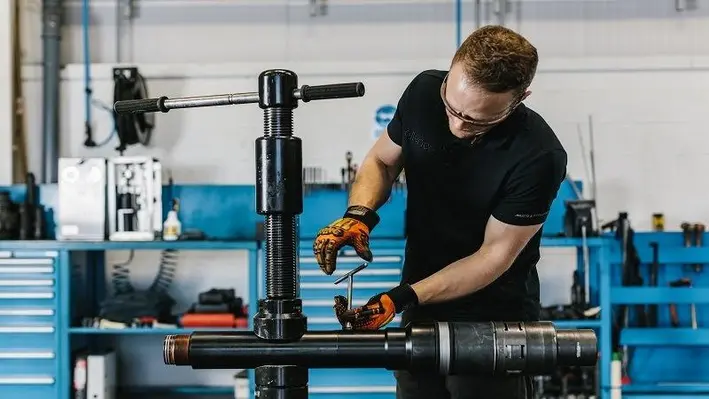

Speaking in an exclusive interview with Offshore Network, David Fisher, Business Development Manager at Oilenco, highlights the latest technology his company is offering to support well intervention and abandonment operations, and looks to the future in the ever-changing oil and gas market.
Since its foundation in 2008, Oilenco has established itself as a trusted designer, engineer, and manufacturer of well intervention and downhole tooling, offering solutions and support to the global oil and gas industry. Founder and Managing Director, Warren Ackroyd, established the company in Aberdeen, UK, and the company has grown and evolved internationally, with a current workforce of 38 employees and growing.
Oilenco’s core business region, as Fisher explained, is the North Sea where they serve key oil and gas operators. While the North Sea will continue to be a major focus for the company, they have recently opened an office in Stavanger, Norway, Oilenco Norge AS, to establish themselves internationally as one of the market leaders in their field. Recent projects in Australia, West Africa and the Middle East strengthens their capabilities as a global provider.
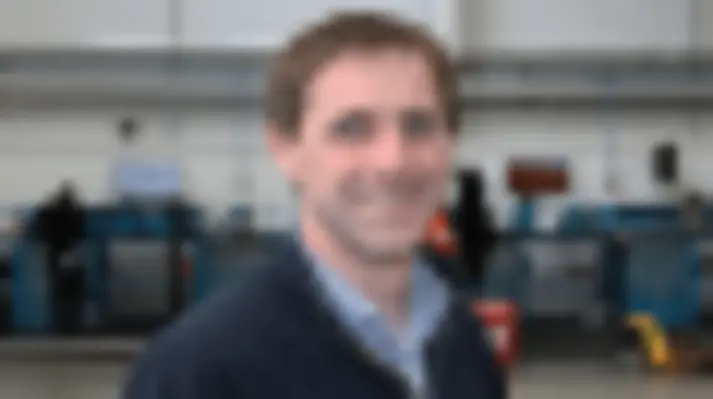
On display at OWI EU
While their scope now spans across the globe, on the immediate horizon is the Offshore Well Intervention EU 2022 (OWI EU 2022) conference arriving in Aberdeen on 14-15 June. As event sponsor, Oilenco is looking forward to showcasing a range of cutting-edge solutions available to the market.
One such technology is their Hybrid Plug range which can be used on routine well intervention or abandonment operations. Fisher commented, “The Hybrid Plug provides a secure, high-performance well isolation barrier that can be set and retrieved on slickline and uses an existing landing nipple profile within the wellbore.”
“One of the key components of the Hybrid Plug is its sealing arrangement. Conventional lock mandrels that are nipple-set tend to have a seal stack and are run and set into a specified landing nipple. However, the Hybrid Plug uses a mechanically ‘energised’ seal providing a ‘best of both worlds’ approach; the pressure integrity assurance of a bridge plug sealing element and the simple operation of a conventional blanking plug. Essentially, it is a cross between a standard lock mandrel design and a bridge plug sealing element, providing a very robust bi-directional seal.”
“As it is a ‘one-run’ solution, it brings significant time savings to the operator generating cost efficiencies, increasing safety, and reducing risk.”
In one case study demonstrating the value of this product, a North Sea operator was conducting a programme of plug and abandonment activity over several subsea wells using a mobile offshore drilling unit (MODU). Oilenco, to support the operation, provided a package of downhole equipment including the Annulus Bore Hybrid Plug package. During routine operations, the operator experienced difficulties establishing a satisfactory pressure test against a bridge plug that had been set in the annulus tubing. As the tubing hanger featured a landing nipple within the annulus bore, Oilenco’s Hybrid Plug could be set in the hanger profile.
The plug was successfully set, and pressure tested by the onboard slickline crew allowing this phase of the programme to be completed on schedule. It was noted that the hybrid plug solution was dependable, easy to operate, saved time, and broadened the capability of the regular offshore crew.
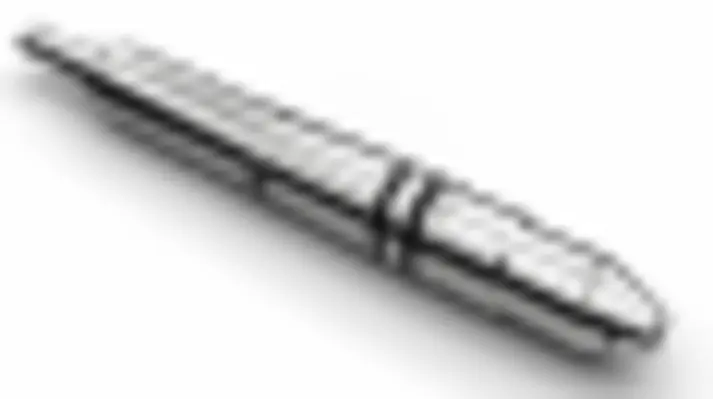
Another technology which the company is looking to showcase at OWI EU is the Pressure Wave Valve, an open-on-demand, intervention-free equalising device that can be attached to lock mandrels or bridge plugs and operates only when it senses a specified ‘wave’ of applied pressure.
Fisher remarked, “If you set a plugging device in the wellbore, you would have to intervene on the well to equalise it before you can pull it out of the well. This means you have to rig up wireline on the well which is an extra run in the hole causing extra risk and extra cost. However, if you have the pressure wave valve installed, it means when you want to equalise, you simply cycle pressure starting from a low-pressure, increasing to an upper pressure, and returning to a low pressure again repeatedly over 6 to 12 cycles. After a predetermined number of cycles, the valve will open.”
The Pressure Wave Valve is particularly useful in P&L/P&A operations and completion workover operations. In one instance, when an abandonment service provider was seeking timesaving opportunities to improve efficiencies during abandonment tubing recovery, they sought the help of Oilenco.
While similar solutions have been in use for several years, Oilenco’s Pressure Wave Valve incorporates significant improvements to increase the operational reliability of the device, including enhancing debris management. In the abandonment project, Oilenco were able to configure the Pressure Wave Valve for the client within their desired operating parameters. The Pressure Wave Valve was pressure cycled open, allowing the tubing to be pulled ‘dry’ without the need for further wireline intervention.
The operation of the valve is non-time dependent. Activation cycles can be carried out within minutes of each other or several months or even years later, with no specific setups required, and the operating parameters of the Pressure Wave Valve are not affected by changes in the wellbore pressures below.
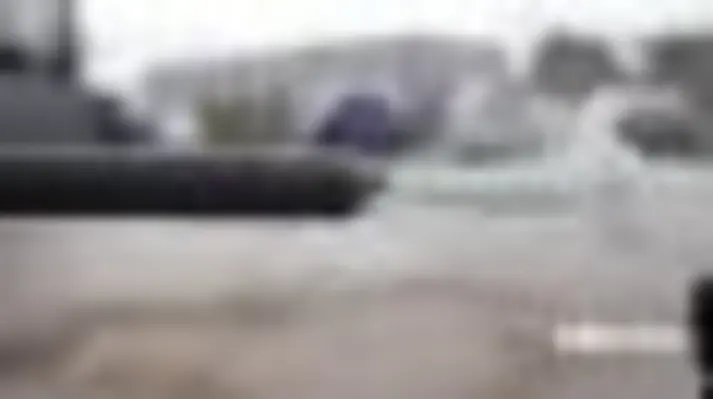
A full range of support
The Hybrid Plug technology and Pressure Wave Valve are key products for the company, but as Fisher was keen to emphasise, they are just the tip of the iceberg.
“We have a wide range of products and solutions that can be tailored towards a customer’s requirements. At OWI EU, we will be discussing different solutions that are relatable to routine well intervention operations and abandonment, such as our scale remedial package, safety valve remedial package, sleeve solutions and much more.”
Oilenco is more than just a high-quality product supplier. They offer a range of services including product training, so customers are fully emersed in the Oilenco solution and full operability of the product.
Fisher noted, “If a client wants to run the equipment themselves rather than receiving onsite support from an Oilenco engineer, we provide training either in our workshop or through training videos (if overseas), as well as providing technical manuals and documents to support our solutions. If attending a training course in person, the delegate is issued with a certificate of competence at the end.”
Ready for the rebound
The pandemic created challenging times for all industries, with those operating within the oil and gas industries forced to contend with uncertain prices, lockdown regulations and employee safety. While we are not completely on stable ground yet, the early recovery signs look positive for the oil and gas sector.
In relation to his company, Fisher remarked, “2018 and 2019 were strong years for us with consistent growth throughout both. 2019 was our best performing year with well intervention and abandonment activity in the North Sea. Covid presented many challenges, but we were here to help our clients through these challenging times, continuing to provide essential support, collaborating with their teams to meet supply requirements. As a result, not only were we fortunate enough to retain our headcount and keep the years of knowledge and experience we have within the company, but we also invested in our facility to ensure that post Covid, we continue to design and manufacture innovative solutions, and provide the high-quality products and services our clients have come to expect from us.”
“Coming out of Covid, certainly from a market perspective, a lot of the projects which were shelved or delayed are starting to resurface. Not only with the current oil price, but partly due to the current geopolitical situation, demand is growing and globally, we are seeing operators investing in production either in existing wells to help increase production or investing in exploration and new well discovery.”
“That being said, well abandonment is still very much on the agenda for many operators, and I am sure it will be here for the next 20-30 years. As Oilenco’s solutions are transferrable between intervention and abandonment, we look forward to continuously supporting our clients globally” Fisher commented.
In concluding, Fisher stated, “Overall, from a company side, it is good to be in a post-Covid recovery space. Being back in face-to-face meetings with clients, being involved in conferences such as OWI EU, seeing and hearing what industry and operators are planning. Oilenco can do everything from initial design to manufacturing, testing, inspection, and training, as well as providing access to a large rental fleet for immediate release. Our team have a breadth of experience that runs right through from concept to completion, it is what makes us a strong company and we are looking forward to showcasing our capabilities.”
Find out more about Oilenco at their website here.
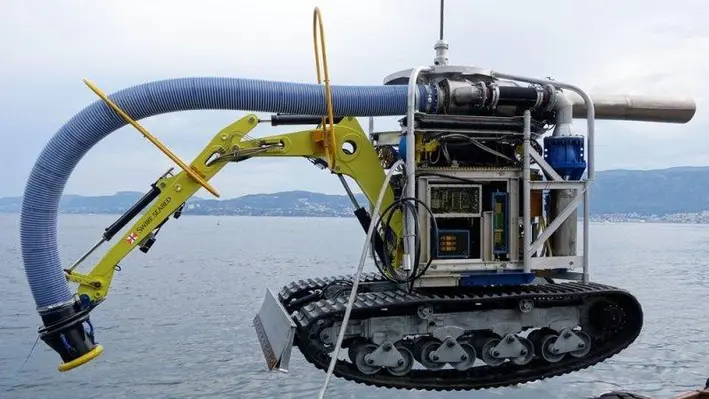
 Claxton AS, a brand within the Energy Services division of Acteon, a marine energy and infrastructure services company, has signed a collaboration agreement with Norwegian-based supplier Seabed Solutions to add value to its decommissioning projects and help operators fulfil their obligation to return subsea sites to their natural state.
Claxton AS, a brand within the Energy Services division of Acteon, a marine energy and infrastructure services company, has signed a collaboration agreement with Norwegian-based supplier Seabed Solutions to add value to its decommissioning projects and help operators fulfil their obligation to return subsea sites to their natural state.
According to Claxton, the partnership simplifies procurement, increases project execution efficiency and reduces costs for infrastructure owners by offering a wider range of dredging, excavation, cutting and decommissioning equipment and services through a single contract interface and by using a combined offshore crew.
Claxton and Seabed Solutions are known for extensive subsea experience and the former is said to have had an operational presence in Norway for over nine years and expanded its base in 2019 to meet industry demand. Seabed Solutions was established in 2015 by a management team with decades of experience leading the Norwegian seabed intervention market.
“As more and more oil and gas installations are getting close to the end of their economic and productive life, the demand for decommissioning services increases. This partnership means that the owners of the outdated installations can get the entire scope of decommissioning services on the same contract,” said Christian Aas, Seabed Solutions Managing Director.
Nick Marriott, Claxton General Manager, Norway, said, “Claxton is excited about the partnership, which will allow us to explore synergies to enhance our client offerings and methodologies to drive growth.”
“Offering integrated services through one contract and a single interface, and with collegial crew use, will help to increase procurement and project execution efficiency,” Nick added.
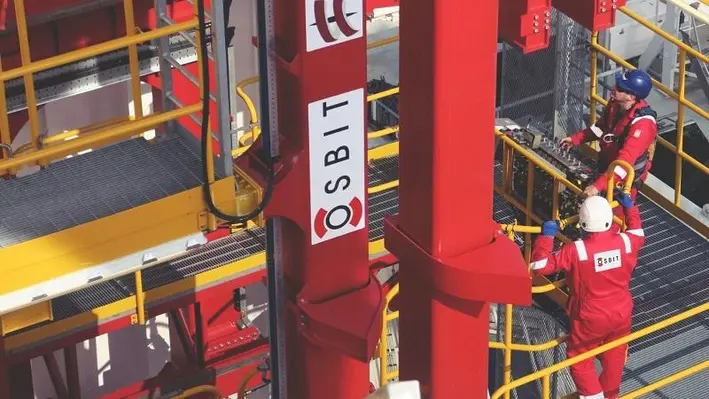

Northumberland-based offshore technology company Osbit has announced that it is set to receive a Queen’s Award for Enterprise.
Osbit has been rewarded for its excellence in innovation – a nod to outstanding achievement and commercial success.
The prize has been given to the company for its development of offshore technology to deliver a step-change in offshore operations. Osbit’s Intervention tension Frame system were designed for industry-leading services company Helix Energy Solutions and use innovation to support energy transition activities, facilitating safer and more efficient closure of expired oil wells.
A representative from Osbit will collect the award at a reception hosted by HRH The Prince of Wales at Buckingham Palace, in July.
Director Steve Binney, commented, “This win is fantastic recognition of what Osbit is capable of, in terms of developing large and complex systems, successfully delivering them, and making a real difference to our customers’ project outcomes.
“Innovation has always been at the heart of everything we do – we’re constantly trying to use our engineering skills to improve on what’s gone before, to do things better, more safely, more effectively.
“We are very proud of this win, which is testament to the genuine skill and ingenuity of our team.”
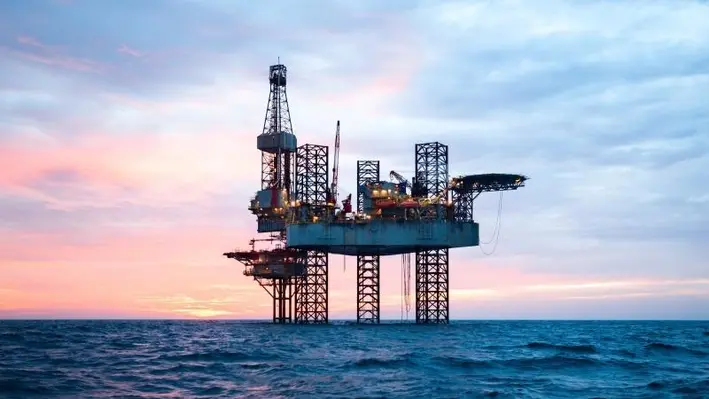

Expro, a provider of energy services, has acquired 100% of Distributed Fiber Optic Sensing (DFOS) company, SolaSense Ltd.
Based in the UK, SolaSense’s well surveillance technology features portable processing software and an enhanced visualisation interface for delivering near-real-time analysis of distributed acoustic sensing (DAS) / distributed temperature sensing (DTS) data at the well site. This allows well characteristics to be readily recognised and evaluated, avoiding the shut-in of wells for extended periods and minimising lost production.
This acquisition along with Expro’s 50 years of well intervention and integrity experience, will allow the company to meet industry demand to provide customers with a one-stop-shop service for the in-depth evaluation of the entire well and also the provision of any subsequent remediation solutions. Expro’s DFOS offering monitors dynamic behaviour in the well, providing a health check of the well and an accurate diagnosis of any well and reservoir issues.
Compared to traditional completion deployed applications of fibre optic technologies, DFOS can be deployed thru-tubing and used to analyse and evaluate well performance and integrity within hours of the completion of the survey providing greater insight into the dynamic behaviour of the well, to help customers make important time-sensitive decisions. Supported by DFOS, it can provide an enhanced cased hole offering integrated slickline mechanical services all within Expro.
Steve Russell, Expro’s Chief Technology Officer, commented, “We are committed to delivering cost-effective, innovative technologies and solutions, and best-in-class safety and service quality performance to our customers, all while advancing our commitment to creating a more sustainable business and lower carbon future.
“Access to representative well data is key for making informed well performance and integrity decisions. This acquisition allows us to build on our existing well intervention and integrity portfolio, leveraging the expertise from both companies to extend our customer’s wells’ lifespan, while reducing time and costs. Led by a highly skilled and dedicated team with extensive industry experience, we look forward to building on our digital solutions and welcoming the SolaSense team to the Expro family,” he added.
John Davies, SolaSense CEO, said, “The SolaSense ambition has always been to see distributed fibre optic logging being used widely as a simple and affordable means of well performance and well integrity monitoring. The integration of SolaSense’s technology and expertise into Expro’s existing global well intervention footprint will fast track the realisation of this ambition, and more importantly, add value for the end customers through the wider uptake of fiber-enabled slickline deployed DFOS surveys. The SolaSense team are very excited about this significant development and look forward to supporting Expro in the fast and efficient expansion of DFOS well logging.”
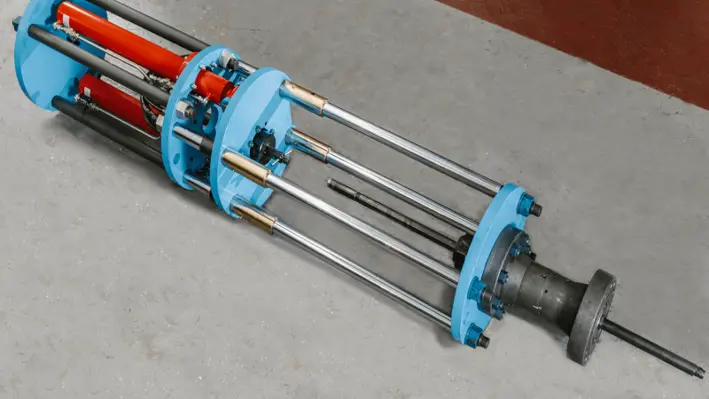

Unity, a provider of well integrity solutions, are supporting a North Sea well decommissioning programme for a major international operator, using its multifunctional Surface Intervention System (SIS).
The SIS has already completed intervention work on the first well, where it was deployed offline to set a shallow bridge plug in preparation for the removal of wellhead equipment. Unity’s standalone technology replaced the need for traditional intervention equipment. It delivered considerable savings to the operator in cost, time and efficiency, by working below deck while plug and abandonment (P&A) drilling operations were ongoing. Compared to traditional methods, the intervention was performed around 60% faster and delivered a cost and personnel package saving of 66%.
During the project, deck space and bed space were limited due to drilling operations, but Unity’s compact SIS technology, which requires just two technicians to operate, provided the ideal shallow intervention solution. The SIS was also said to be easy to accommodate on the platform below the drilling rig in a restricted well bay. The SIS and pressure control package were rigged-up below deck using a small A-frame crane provided by Unity. The plug was set first time and the equipment was rigged down within 24 hours.
Gary Smart, CEO at Unity said, “The SIS has great utility and has been by used several operators for milling, inspection, fracturing and P&A operations, enabling material savings against traditional shallow well intervention techniques. This technology will soon be joining our newly-announced Compact Shear Seal Valve technology, reducing the footprint and weight of the overall system even further.”
The SIS is the first multifunctional shallow well intervention system on the market and combines heavyweight capability within a compact and mobile package. The SIS has a powerful hydraulic motor, driving a push, pull and rotate function which can rival wireline or coiled tubing capability.
Unity has established an impressive well decommissioning project track record which currently extends to over 150 wells with another 230 in the pipeline over the next three years.
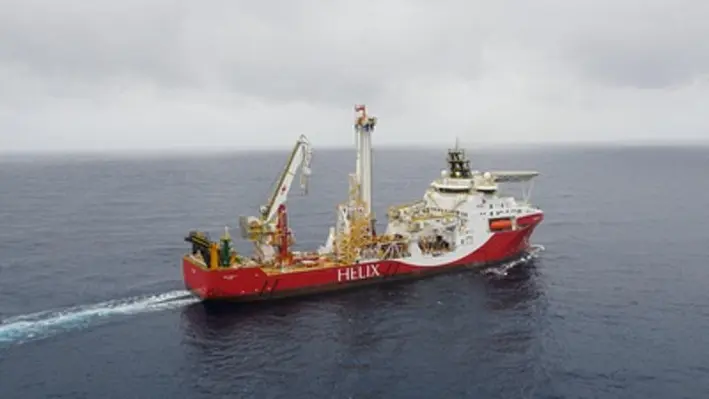

Siem Offshore and Helix Energy Solutions Group Inc, have entered into an agreement for the well intervention Vessels Siem Helix 1 and Siem Helix 2 which replace the existing contracts.
The new firm period will be three years for Siem Helix 1 and 5 years for Siem Helix 2 with subsequent options for both vessels. Commencement will be in direct continuation of present contracts within the first quarter of 2022.
The two vessels are said to be purpose designed, advanced well intervention vessels capable of completing a wide range of subsea projects such as well intervention, decommissioning, top hole drilling, subsea installation work, offshore crane and ROV operations, offshore construction work and emergency response capabilities. Both vessels have a length of 158 metres, a beam of 31 metres and an accommodation capacity for 150 people. They can operate in up to 3,000 metres of water with transit speed in excess of 15 kn.
This extension has reconfirmed Siem Offshore’s important role within the well intervention segment, and the company stated that it is very pleased to see a key client such as Helix Energy Solutions extend their professional relationship.
Total contract backlog for SIOFF is now valued at US$440mn.
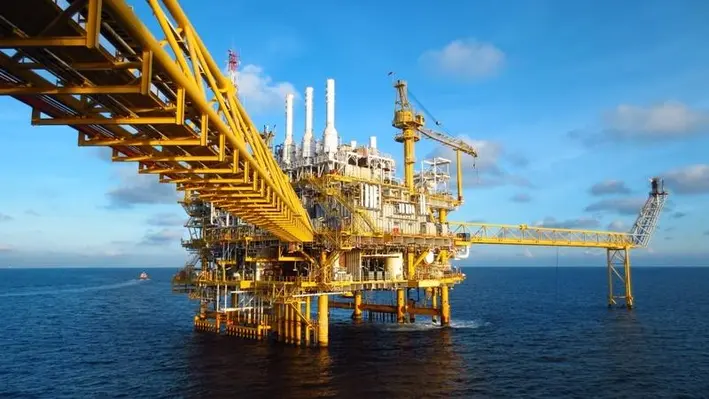
 EnQuest, a production and development company, with operations in the UK North Sea and Malaysia, has provided an update on its operational performance, decommissioning business and for the year 2021.
EnQuest, a production and development company, with operations in the UK North Sea and Malaysia, has provided an update on its operational performance, decommissioning business and for the year 2021.
The company also reported that its debt reduction continues with strong cash flow and improved macro conditions.
EnQuest chief executive, Amjad Bseisu, commented, “Our decommissioning business performed better than expected, while our emissions were 45.7% below the North Sea Transition Deal 2018 baseline, and close to the 2030 target of 50%. I am very pleased we are industry-leading in emission reductions and am excited about our new energy initiatives around Sullom Voe.
“The supportive macro environment and higher oil prices allow us to look forward to organic growth to offset natural declines. We remain focused on continuing to reduce our net debt while selectively investing in our low-cost, quick payback well portfolio. At the same time, we will continue to be disciplined with respect to M&A opportunities.
“EnQuest’s business is strongly positioned to play an important role in the energy transition. We will do so by responsibly optimising production, leveraging existing infrastructure, delivering strong decommissioning performance and exploring new energy and further decarbonisation opportunities.”
The company also reported that during the year, a production enhancement programme, including a coil tubing intervention campaign was undertaken, restoring four wells to production. Repairs to a compressor gearbox failure which resulted in single train operations during much of the fourth quarter of 2021 were completed and both trains are now in operation.
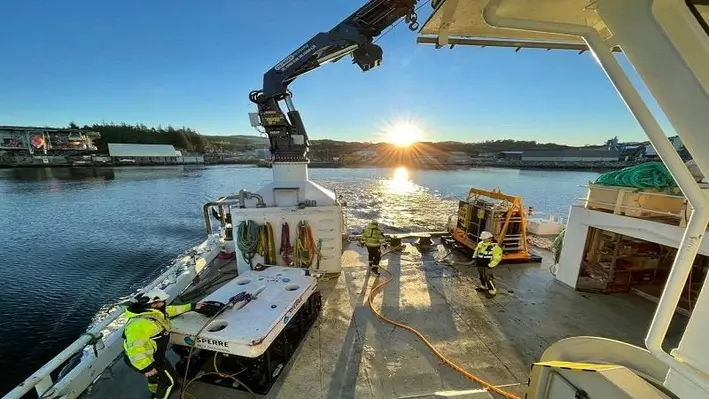

Innova AS and Teledyne Energy System Inc. have demonstrated how hydrogen can be used for local power of subsea control systems.
Teledyne’s Subsea Fuel Cell Supercharger is a hydrogen and oxygen fuel cell electric power source designed to operate on the ocean floor with no connection to the surface. It is inherently load following and provides power on demand. The subsea hydraulic power unit (sHPU) developed by Innova provides control fluids, grease and chemicals for different subsea application at a pressure up to 690 bar.
The demonstration included a well intervention simulation in which the Subsea Supercharger powered the Innova sHPU. The two systems were integrated and effectively deployed to a depth of 235 metres (770 feet) where a low viscosity fluid was pumped to a pressure of 180 bar (2,600 psi) for 30 minutes, six times a day.
The Subsea Supercharger transitioned from ‘Sleep-mode’ to ‘On’ in response to power demands from the sHPU as it repeatedly cycled on and off.
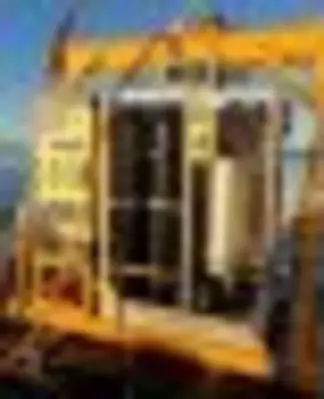
The system was designed to provide the offshore oil and gas community with an environmentally responsible backup power alternative for failing umbilical power sources as well as untethered power for green field development or brown field sustainment. It is also capable of powering resident ROVs, providing energy for autonomous underwater vehicle (AUV) charging docks, back-up power for subsea control systems, and supports transition to green hydrogen from fossil fueled surface-based systems.
The demonstration took place at the Norwegian Center for Offshore Education, Tau Autonomy Center in Tau, Norway. The next validation test will occur in the spring of 2022 and will incorporate the Subsea Supercharger with an AUV charging dock to demonstrate untethered, long-duration AUV operations.
Page 5 of 9